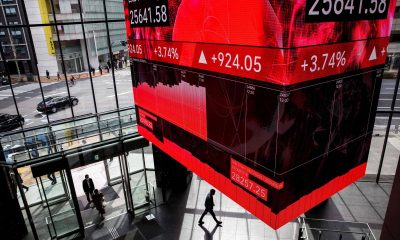Commodities
Oil rises on supply concerns fuelled by Russian political turmoil

Oil prices rose on Monday after a revolt by Russian mercenaries over the weekend raised concerns about political instability in Russia and the potential impact on oil supply from one of the world’s largest producers.
Brent crude futures were up 56 cents, or 0.8% at $74.41 a barrel by 0725 GMT. U.S. West Texas Intermediate crude (WTI) was up 44 cents, or 0.6%, at $69.44. Both benchmarks gained as much as 1.3% in early Asian trade.
A clash between Moscow and Russian mercenary group Wagner was averted on Saturday after the heavily armed mercenaries withdrew from the southern Russian city of Rostov under a deal that halted their rapid advance on the capital.
However, the challenge has raised questions about President Vladimir Putin’s grip on power and concerns about possible disruption of Russian oil supply.
Consultancy Rystad Energy said in a note late on Sunday that it did not expect to see a significant increase in oil prices as a result of the “short-lived event”.
“We do, however, believe that the geopolitical risk amid internal instability in Russia has increased,” Rystad added.
RBC Capital Markets analyst Helima Croft said there were concerns that Putin would declare martial law, preventing staff at loading ports and energy facilities from reporting for work, potentially halting millions of barrels of exports.
“It is our understanding that the White House was actively engaged yesterday in reaching out to key domestic and foreign producers about contingency planning to keep the market well supplied if the crisis impacted Russian output,” she said in a note on Sunday.
Goldman Sachs analysts said markets could price a moderately higher probability of domestic volatility in Russia leading to supply disruptions. However, the impact could be limited because spot fundamentals have not changed, the analysts added.
The number of oil and natural gas rigs operated by U.S. energy companies – an early indicator of future output – fell for an eighth week in a row for the first time since July 2020, a closely followed report showed on Friday.
Both Brent and WTI prices fell by about 3.6% last week on worries that further interest rate hikes by the U.S. Federal Reserve could sap oil demand at a time when China’s economic recovery has also disappointed investors after several months of softer than expected consumption, production and property market data.
“China’s economic growth has been a nightmare for commodity markets, particularly in oil and industrial metals,” CMC Markets analyst Tina Teng said in a note.
Commodities
Oil prices rise; U.S. crude inventories plunge, Russia-Ukraine truce eyed
Commodities
India’s Reliance to stop buying Venezuelan oil over US tariffs, sources say
Commodities
Oil prices climb on Venezuela supply worries

 Forex3 years ago
Forex3 years agoForex Today: the dollar is gaining strength amid gloomy sentiment at the start of the Fed’s week

 Forex3 years ago
Forex3 years agoUnbiased review of Pocket Option broker

 Forex3 years ago
Forex3 years agoDollar to pound sterling exchange rate today: Pound plummeted to its lowest since 1985

 Forex3 years ago
Forex3 years agoHow is the Australian dollar doing today?

 Cryptocurrency3 years ago
Cryptocurrency3 years agoWhat happened in the crypto market – current events today

 World3 years ago
World3 years agoWhy are modern video games an art form?

 Commodities3 years ago
Commodities3 years agoCopper continues to fall in price on expectations of lower demand in China

 Economy3 years ago
Economy3 years agoCrude oil tankers double in price due to EU anti-Russian sanctions



































